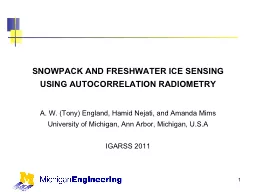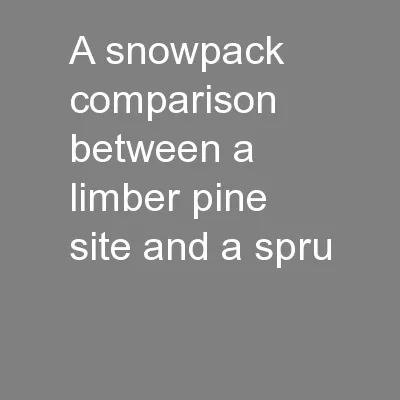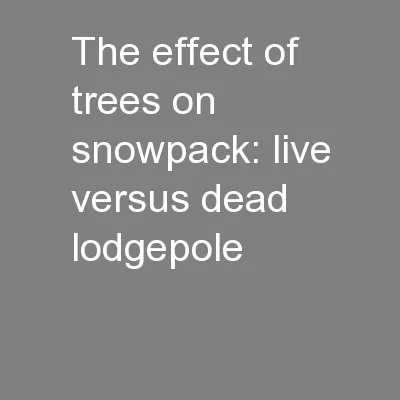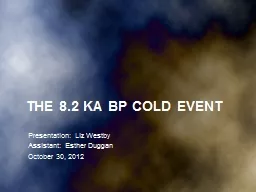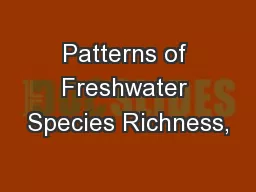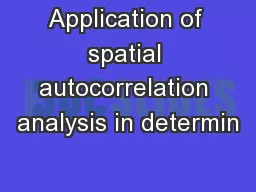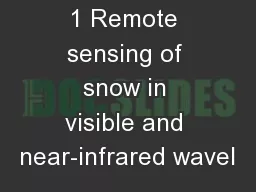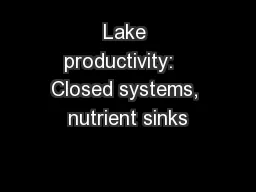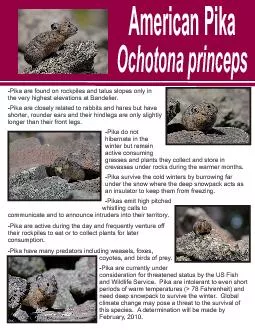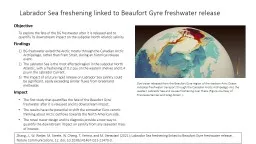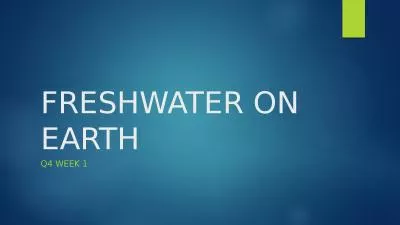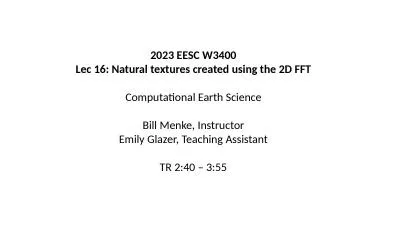PPT-1 SNOWPACK AND FRESHWATER ICE SENSING USING AUTOCORRELATION
Author : karlyn-bohler | Published Date : 2016-12-17
RADIOMETRY A W Tony England Hamid Nejati and Amanda Mims University of Michigan Ann Arbor Michigan US A IGARSS 2011 Outline Intro to global snowpack sensing
Presentation Embed Code
Download Presentation
Download Presentation The PPT/PDF document "1 SNOWPACK AND FRESHWATER ICE SENSING US..." is the property of its rightful owner. Permission is granted to download and print the materials on this website for personal, non-commercial use only, and to display it on your personal computer provided you do not modify the materials and that you retain all copyright notices contained in the materials. By downloading content from our website, you accept the terms of this agreement.
1 SNOWPACK AND FRESHWATER ICE SENSING USING AUTOCORRELATION: Transcript
Download Rules Of Document
"1 SNOWPACK AND FRESHWATER ICE SENSING USING AUTOCORRELATION"The content belongs to its owner. You may download and print it for personal use, without modification, and keep all copyright notices. By downloading, you agree to these terms.
Related Documents

